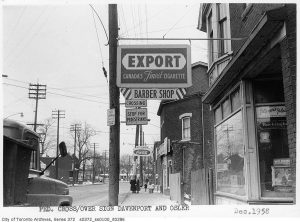Toronto History: A Quick Trip Down Memory Lane
Toronto, Canada’s cosmopolitan city, now boasts of a population of over 6.418 million and is also known for being the world’s most ethnically diverse culture. However, 300 years ago, it was little more than the portage where Humber River flows towards Lake Ontario. The place then was known to some French voyageurs and local natives alone.
Indian Meets White Man
Toronto area’s first settles were the native North American Indians. For around 10,000 years, different tribes lived in the areas surrounding Lake Ontario. During the initial explorations of Europeans of the region, the Petuns and Hurons were the predominant Indian tribes.
By 1600s, the populations of Indians in most part of North America were hit by diseases that European settlers and explorers brought to the new world. As the number of indian tribes grew smaller because of the disease, tribes fought with one another for survival.
It was during 1688 when the French displaced most of the Indian tribes, making southern Ontario region dominated mostly by white men.
Early French Period
It was believed that Etienne Brule was the first one to reach the Toronto area, but scholars are questioning whether Brule really reached the Lake Ontario at Toronto. As Europeans settled in the area, with the French establishing a trading post on Humber River, many changes took place. Until 1759, Fort Rouille or popularly called Fort Toronto served as a trading post. During that time, the French were locked in a protracted war with the British to decide as to what imperial power will have the upper hand in dividing up global colonial interests. The French retreated from most of inland North America by 1759. Before they retreat from Fort Rouille, they burned down the fort to the ground instead of making it fall into the hands of the English.
Take Over of the British
The Treaty of Paris in 1763 formalized the end of French control of the places now known as Ontario and Toronto, making the start of English domination. In the next few decades, Toronto’s fate was largely decided by the events that took place south of great lakes in American Colonies.
John Graves Simcoe, Lieutenant-Governor of Upper Canada, decided to move the capital of the province from Newark to Toronto in 1793, renaming the town York. Back then, it was a really small town with only around 50 families. In 1813, York was captured by the Americans and most of its major buildings have been burned down to the ground.
Toronto’s Development Together with Canada
The name York was again changed back to Toronto by 1834, and by 1841, it became the capital of the newly minted region of Canada West of United Province of Canada. In the year 1867 with the expansion and reformation of the Canadian confederation, Toronto continued being the capital of the new Ontario province.
Growth in population of the area started in the later part of the 1800s, with most of the immigration happening during the early and mid-1800s, coming from Ireland and Britain. This is the reason why Toronto became a completely English-Scottish-Irish town and stayed this way until changes in immigration patterns happened during the late 1800s.
Note our Toronto Most Notable People here
Also see Toronto Restaurants, Toronto Landmarks,

